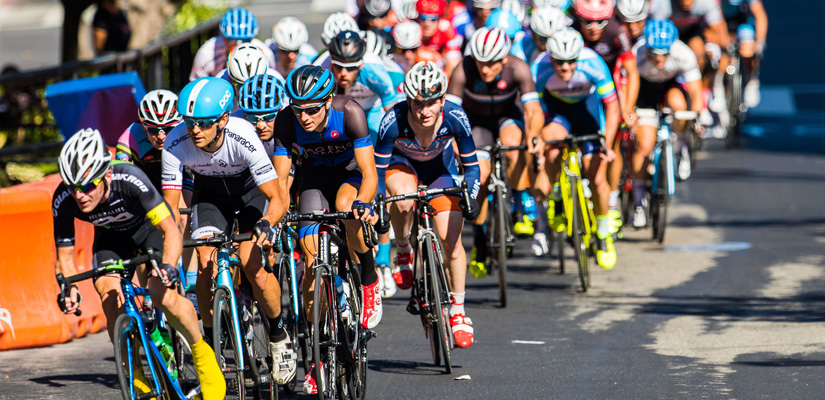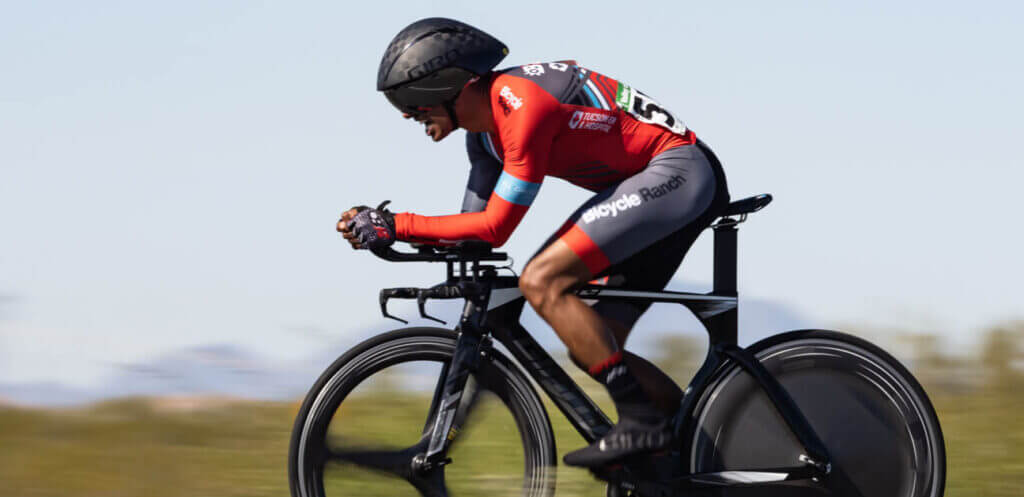How to Prioritize Your Races and Build a Seasonal Race Plan

Prioritizing your races throughout the year is a necessary part of building an annual training plan. By strategically planning your events, you can build fitness, confidence and experience that will give you the best chance at success for your big race day.
Why Prioritize Your Events?
Cyclists and triathletes tend to be very competitive people who never want to settle for anything less than a win from every race. As ideal as it would be to ride at your best all year, our bodies simply cannot maintain the balancing act of fitness and freshness that allows us to perform at “peak” levels for that long.
Knowing that, it’s paramount to prioritize your races so that you can time your peak fitness with your most important events. As hard as it may be to face the fact that you will not win every race, the reward of properly prioritizing your races can pay off in a big way on the day of your goal event.
High-Priority Races
Take into consideration your performances at your goal events last year, then decide if you are going for redemption or new records. Once you have this part sorted out, it’s time to select your goal event(s).
A “goal event” is often called an A Race. In almost every case, you won’t have more than a couple of them in a year. These events act as the climax and culmination of your training efforts for the year, therefore, it’s important to select events that give yourself the best chance of success — whatever “success” may mean for you.
Successful preparation for A races usually require a taper of some sort. Tapering is key prior to an A Race as it allows your body to be as fresh as possible on race day.
Once you’ve selected your A races, you have an end goal for your season’s training. This allows you to backfill your training plan so that you can gradually build the type of fitness you’ll need for race day. Once you have your training plan organized for your A Race, you can start prioritizing other less critical races. These are called your B and C races.
Medium-Priority Races
During the Build and Specialty Phases of your training, you’ll want to find events that emulate a specific aspect of your A Race. These will be your B races. The goal of these events should be to prepare you specifically for your A Race. What’s more, they should focus on overall placement, or on developing a specific aspect of your fitness or racing strategy.
There’s no correct number of B races you should have on your calendar, but their frequency will increase as you get closer to your A Race. As a general rule of thumb, you should pick enough of them so that you feel like you have sufficient racing experience accumulated before big race day.
B races can be fantastic litmus tests for you as your progress through your training plan. By picking events that closely resemble your A Race, you’ll be able to execute your planned race preparation and strategy and see how effective it is. In other words, these races are your rough drafts for your big day. For this reason, events that resemble the course profile, duration, intensity or environment that you will experience during your A Race are great candidates for B races.
B races usually don’t require a specific taper period, but as you get closer to your A Race they can be a good opportunity to test your taper strategy.
Low-Priority Races
Towards the latter end of your Base Phase, you’ll want to start selecting lower priority events that will give you some competitive experience. These are called C races and your results at these races should be of minimal concern. The low-consequence nature of C races provides the perfect opportunity to throw different race strategies at the wall and see what sticks.
While C races normally start during the end of your Base Phase, they certainly don’t end there. C races can continue through your Build Phase and into your Specialty Phase. A common choice for C races are weekly twilight races, short-distance triathlons, or relaxed one-off events of little consequence. These events don’t require any specific tapering and can easily replace planned training sessions. Having said that, these races will often be a demanding workout, so do your best to make sure you aren’t doing so many of these events that they are throwing off your training progression.
How to Plan for More Than One A Race
If you have more than one A Race planned for the year, then the strategy is simple. Just as you would build towards one A Race with C races first and B races next, do the same as you reset your training and rebuild toward your next goal event.
If your goal is to place well in a series of races over a condensed period of time, then make sure you aren’t overloading yourself with too many C or B races during that time period.
Although it may be tempting to consider every race in that series an A Race, it is still a good idea for athletes in this situation to prioritize certain events. This can give you a huge competitive advantage if you time it right. Most athletes will come into a series hoping to be on peak form, and over time, their performances will diminish. Recognizing that and strategically selecting a groupinf of races that are later in the series can prove very beneficial. You’ll come in with good form while others are at their peak, and as their performance begins to steeply decline, you will just be coming into peak form.
Listen to Certified Cycling Coaches Discuss Season Race Planning
“How to Prioritize your Races and Build a Seasonal Race Plan” is just one topic we covered in last week’s episode of the Ask a Cycling Coach podcast. Listen to the episode’s full recording below to hear this and other questions from cyclists get answered by our certified cycling coaches.
Additional Notes
TrainerRoad’s Ask a Cycling Coach podcast is dedicated to making you a faster cyclist. It gives you the chance to get answers to your cycling and triathlon training questions from USAC certified coaches Chad Timmerman, Jonathan Lee and special guests. Learn more about other topics we covered in the latest episode with our resources below:
- How to use your FTP to build a race plan
- How to structure your work/recovery weeks in a cycling training plan
- How to adjust your training plan if you aren’t improving
- How to incorporate commuting into my base training?
- How to follow TrainerRoad’s Sweet Spot Base training plan
- How to maintain peak fitness for a long period of time
- How to shorten your training plan when you’re time crunched
- How to accommodate a training camp in the middle of your training plan
- How to avoid heart rate spikes
- Which heart rate monitors are best for cyclists
- How to reduce or increase your training volume in the middle of a training plan
- How to train for short, hard climbs
- How to lay out a multi-year training plan
- How to adjust your training for a busy schedule or travel
- Recovery tips for cyclists who travel
- How to determine your amount of training volume
- Which approach should you take for base training?
If you have a question that you’d like to ask Coach Chad, submit your question here. We’ll do our best to answer them on the next episode of the Ask a Cycling Coach podcast.
